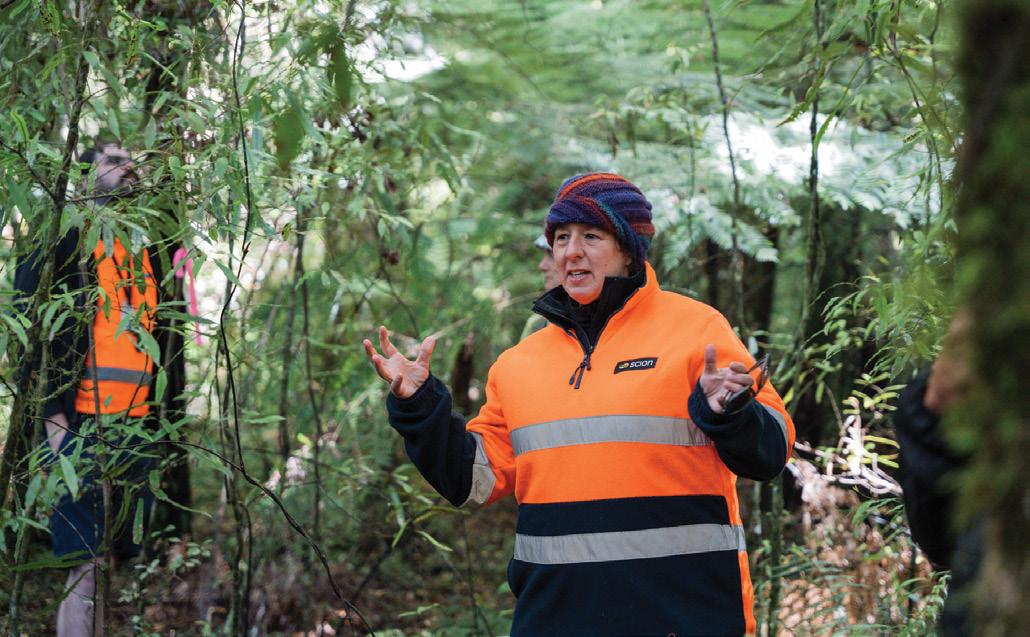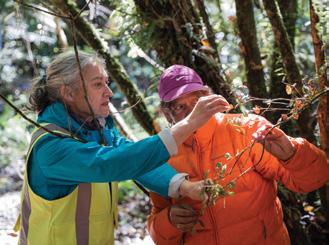
3 minute read
Rotoiti 15 & Myrtle Rust
Myrtle Rust & Jobs For Resistance Project
First published Bay Conservation - Our Stories - Our People, By Rotoiti 15
Myrtle rust arrived in New Zealand in 2017 and has been spreading quickly. It is a particularly damaging fungal disease that can attack more than 30 native species in New Zealand. Pōhutukawa, as well as rātā, manuka, kanuka, ramarama together with feijoa and eucalyptus are all susceptible to myrtle rust. Death of mature ramarama trees has been recently observed in the East Cape and the disease is escalating in the Bay of Plenty. Myrtle rust is a wind-borne disease and is impossible to contain.
BCA Member group, Rotoiti 15 shares their response to this threat and involvement in the fight to protect against the fungal disease and how this fits into their vision of kia hihiri te ōhanga, te oranga me te pukumahi i runga i te ngākau ngātahi (Working together to protect and grow the well-being of our people, environment and culture).
Reconnecting People To Nature
Rotoiti 15 Trust is on a journey to reconnect people to nature and build a passion for conservation. “Our Trust is dedicated to combating myrtle rust by fostering a profound connection with our taiao (environment), both physically and spiritually. Our efforts extend to nurturing our whakapapa, forging strong ties to our whenua, and revitalising our traditional and innovative knowledge systems. In the face of the myrtle rust threat, our commitment to environmental harmony and cultural sustainability guides our actions, reinforcing the importance of safeguarding our native plants and ecosystems for future generations.”
Over the past two years Rotoiti 15 has partnered with Scion under the ‘Myrtle Rust – Jobs for Resistance’ project, funded by the Department of Conservation – Te Papa Atawhai as part of the Jobs for Nature programme. The project’s key objectives include developing and implementing a myrtle rust surveillance and monitoring program for the Bay of Plenty, assessing host susceptibility, conserving genetic variation for resistance breeding, and providing a transferrable template for regions susceptible to myrtle rust. The geographical focus initially encompasses Rotoiti and Rotomā, with plans to extend surveillance pending relevant approvals from mana whenua.
Over the course of the programme the Trust has been able to employ ten of our haukāinga (locals) to deliver on fieldwork throughout the project area. Working in the forest has been particularly rewarding for these kaimahi, (workers), — restoring lost connections with whakapapa and helping to unlock a sense of purpose for many employed in the Te Rātā Whakamaru programme. This aligns with the broader vision of not only protecting the environment, but contributing to the socioeconomic resilience of our people.
Conclusion
Through a holistic approach that encompasses ecological preservation, community well-being, and the revitalisation of traditional knowledge systems, Rotoiti 15 aspires not just to safeguard against myrtle rust, but to create a resilient and sustainable future for our taiao (environment).

Rotoiti 15 website - Click here
More info about Bay Conservation here










